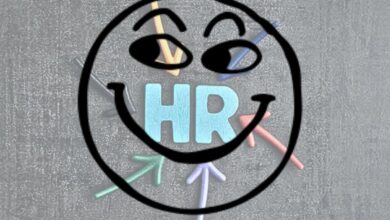Disney’s biggest financial problem has nothing to do with the coronavirus
The Magic Kingdom’s once sorcerous profitability is getting slammed both by COVID-19 and the drag from its acquisition of 21st Century Fox. The hit from the virus will eventually be mitigated. But the damage from the superexpensive deal is likely to saddle the new, vastly expanded Disney with far lower returns than the pre-Fox realm for years to come.
In its earnings announcement for the second quarter (ended March 31), the Walt Disney Co. detailed how the coronavirus suddenly savaged its entertainment strongholds that were thriving until midway through the quarter. Disney shuttered all of its worldwide theme parks and suspended its cruises in February and March, causing a 58% drop in operating income from its parks, experiences, and consumer products franchise, its most profitable segment. Operating income dropped from $3.8 billion in the second quarter of last year to $2.4 billion, a fall of 37%. To save cash, Disney canceled its $1.6 billion, semiannual dividend to be paid in July and unveiled a reduction in annual capex of $400 million, or around 8%. Its press release cited “significant operational and financial disruption caused by COVID-19.”
That Disney is temporarily scrapping the dividend it’s been paying since 1962 would have seemed unimaginable just weeks ago. But when the crisis passes, the traditional Disney businesses should do better than ever, boosted by the fast takeoff in its new Disney+ and ESPN+ streaming services. What will blunt the lift from those promising new ventures, and hobble the global colossus going forward is the $71.3 billion acquisition of 21st Century Fox. Put simply, the Fox deal is proving such a deadweight that even before the pandemic hit, it was seriously weighing on the company’s returns.
A rocky start
When Disney and 20th Century Fox announced the acquisition on Dec. 14, 2017, the price was set at $52.4 billion. But six months later, Comcast launched a bidding war for Fox, forcing Disney to pay 34% more than it had planned––$71.3 billion––to clinch the deal. Disney was willing to pay a king’s ransom because it’s betting heavily on streaming to drive its future profits. Fox owned a panoply of blockbuster films such as Avatar and the X-Men series, hit TV shows such as The Simpsons and Modern Family, as well as the Discovery, FX, and National Geographic cable networks.
The idea was to enhance the value of those properties, and fresh entertainment produced by Fox’s storied TV and 20th Century Fox studios, by showing them not just in theaters and cable, but on the new Disney+ streaming platform for families and children. The deal also gave Disney control of another streaming property it coveted, Hulu, a direct-to-consumer service aimed at adults. Returning to Disney’s Marvel Studios were iconic characters that Marvel had sold to Fox in the late 1990s, a gallery that besides X-Men includes Fantastic Four and Deadpool.
So far, the Fox entertainment properties have performed a lot worse Disney anticipated. The main losers have been films in the Fox pipeline released just after the acquisition. The X-Men sequel Dark Phoenix flopped, contributing to a $170 million loss for the Fox film studio in Disney’s third quarter of 2019, the combined companies’ first full quarter. Fox features Stuber, Ad Astra, and The Art of Racing in the Rain fizzled as well. Fox’s two big releases this year, The Call of the Wild and Underwater, were expected to lose tens of millions of dollars before the pandemic struck.
As early as last summer, CEO Bob Iger, who stepped down to become executive chairman in late February, acknowledged “that it would take a good, solid year or two before we can have an impact” on Fox’s troubled movie business.
The deal has shown a few positives. Disney is on track to surpass its aggressive goal of achieving $2 billion in cost synergies that would pare its expense base around 4% by the end of its September 2021 fiscal year. And Fox finally showed its stuff with the release of megabit Ford v Ferrari.
In the past, Disney has turned acquisitions into big successes by taking a long-term approach to nurturing promising brands. For example, it took two years after the $4 billion acquisition of Lucasfilm in 2012 for Disney to produce the first new Star Wars extravaganza, yet Disney patiently turned its bet into one of the most lucrative franchises in film history, following with two more galactic smashes and planning new chapters to the saga. Disney now has ambitions to turn Fox properties such as Avatar into long-running, Star Wars–style series, a strategy that also shows promise.
The best news for Disney, of course, is Disney+. The lockdown has boosted stay-at-home entertainment, and Disney+ is drawing customers at a pace exceeding Disney’s optimistic projections: Since the launch in November, it has drawn 54.4 million subscribers, nearing a goal it set for 2024. The streaming service’s quick start could boost the value of the Fox programming that will form a large part of its offering.
Still, the Fox deal is a totally new adventure. Disney’s never done a deal remotely this size. The past acquisitions that paid off––Lucasfilm, Pixar (2006), and Marvel (2009)––cost a total of less than $16 billion, around one-fifth of what Disney paid for Fox.
How to measure the Fox deal
Here’s a fair criterion for assessing the results of the Fox acquisition: How much extra profit is Disney generating from adding Fox’s TV and movie studios, and all its other vaunted entertainment assets, after subtracting a reasonable charge for the $71.3 billion Disney spent to acquire those assets?
A tool called economic value added, or EVA, provides the answer. ISS, the proxy advisory giant, licenses the EVA system to money managers and uses it as a key benchmark recommending for or against pay packages for the top brass. EVA is also deployed by Clorox, 3M, Dow, Petrobras of Brazil, and sundry other big companies.
EVA makes logical adjustments to the standard measures of Generally Accepted Accounting Principles (GAAP); it capitalizes annual ad expenditures and restructuring costs to treat them as investments rather than expenses, and, for example, amortizes advertising, a big item for Disney, over three years. The methodology incorporates those adjustments to arrive at an income measure called net operating profit after tax, or NOPAT.
From NOPAT, EVA subtracts a charge based on all the debt and equity invested in the business. That’s crucial, because regular accounting doesn’t impose a hit for the equity, either in cash or in stock, that a company spends on an acquisition, for instance. But that equity carries a real economic cost. After all, the acquirer could use that cash, or sell shares, to fund profitable new projects, or return it to stockholders who could channel the money into other investments.
If NOPAT exceeds the capital charge, then the company is generating a positive EVA, meaning that it’s producing real economic profit for its investors. As Roberto Goizueta, the legendary CEO of Coca-Cola in the 1990s, told me, “I count all my reported profits, pay a capital charge, and what’s left over is real profit, what investors are getting over and above what they’d receive putting their money into another investment with about the same risk.” Goizueta also noted that breaking even on EVA is equivalent to a professional golfer shooting par. That’s an adequate performance, but to win, you need better.
Profits were falling pre-pandemic
Disney acquired Fox on March 20, 2019. So its results for the 12 months ended in its just-reported March second quarter comprise a full year for the combined Disney and Fox. The previous four quarters, ended in March 2019, include just a few days of Fox ownership. So the most recent four quarters are all Disney plus Fox, and the prior period is pure Disney. Here’s how the traditional and expanded Magic Kingdoms compare.
The deal lifted Disney’s sales by 31% from $59.8 billion to $72.2 billion. Profits, however, went into reverse. From the start of April 2018 through the end of March 2019, Disney generated a fantastic $10.7 billion in adjusted operating income, or NOPAT. It squeezed that gusher of profit on a modest $88.5 billion in debt and equity. After imposing a 6.5% charge of $6 billion on that capital, Disney emerged with EVA, or economic profit, of $4.7 billion ($10.7 billion in NOPAT minus the $6 billion capital deduction). As Goizueta might say, Disney was shooting birdies and eagles, and scoring way under-par.
Compare that splendid romp with the Disney scorecard for 2019. It’s important to note that Disney’s profits slumped in part because of the big investments in streaming services it’s counting on to drive future profits––and that spending is well-targeted. Still, the reversal in adjusted earnings is stunning. As a stand-alone, Fox was far less efficient than Disney. In its 12 months just pre-Fox, Disney posted sales, general and administrative expenses, excluding advertising and after making other adjustments, of 9.3% of sales; in the past four quarters, adding Fox to the mix boosted the overhead burden to 12.4%, an increase of $4.4 billion. Adjusted operating earnings, or that key NOPAT number, fell from $10.650 billion to $8.230 billion.
Keep in mind, Disney earned a lot less despite heaping on the over $70 billion in new capital spent to acquire Fox’s panoply of properties. The acquisition raised the total debt and equity on its balance sheet by 85% to $156 billion. Hence, the capital charge almost doubled with total capital, rising to $9.54 billion. It was the combination of that huge capital charge and fall in NOPAT that sent EVA cratering to a negative $1.3 billion. In effect, buying Fox caused a gigantic, one-year, $6.7 billion fall in economic profit. “Disney was caught in a scissors,” says Bennett Stewart, cofounder of the firm that launched EVA and now an adviser to ISS. “Profit was falling while capital was exploding.”
It will take years for Disney to get back to even
Translated into EVA, the consensus forecast shows economic profit falling to a negative $3.8 billion in calendar year 2020, and minus $1.7 billion in 2021, and only clears its prior high-water mark in 2024, well after the effects of the virus have worn off. “Disney dug a deep hole in acquiring Fox,” says Stewart. “When a company overpays to that extent, it seldom gets its money back.” It’s not just that the timing of the Fox deal was wrong, given the unforeseen pounding from the pandemic. At $70 billion-plus, the deal was wrong to begin with.
Disney has worked incredible magic over the years. But this deal looks much more like a frog than a handsome prince.
Source: Fortune




